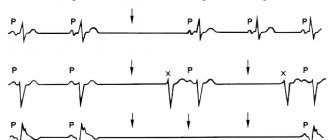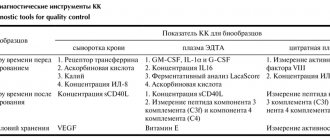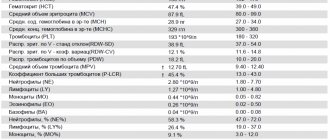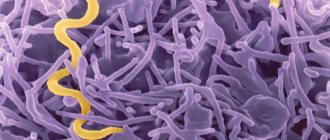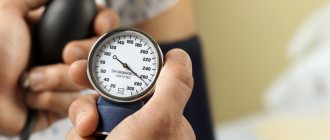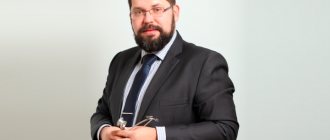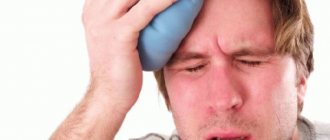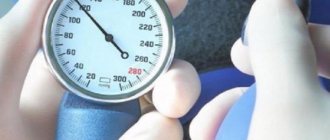For the timely detection of pathologies, medicine uses many diagnostic methods. Along with measuring body temperature or blood pressure, the procedure for determining the degree of oxygen saturation in the blood has become widespread. It facilitates the treatment of people at risk and helps prevent complications. A medical device called a pulse oximeter is used to monitor patients. This is a simple device that can facilitate monitoring of patients and save many lives.
Pulse oximetry: indications, features of preparation and conduct of the study
To determine the degree of oxygen saturation in the blood, a special study is performed - pulse oximetry. The diagnosis is based on the ability of such types of hemoglobin as carboxyhemoglobin and oxyhemoglobin to absorb light rays with different intensities. The degree of absorption is affected by the amount of oxyhemoglobin. The level of absorption is higher when there is a large amount of hemoglobin of the specified type. do pulse oximetry at a clinic in Rostov-on-Don by appointment.
Indications for the study
A hardware method for determining the level of blood oxygen saturation is used to monitor the patient's condition.
It usually shows real-time data. There are models of pulse oximeters that save data and create graphs. In more rare cases, the method in question for determining the level of oxygen in the blood is prescribed as a separate diagnostic method. Pulse oximetry in the sleep medicine department is indicated for patients who suffer from breathing problems during night rest. Breathing disorders at night are observed in the following pathologies:
- hypertension;
- obesity;
- COPD;
- Pickwick's syndrome;
- respiratory failure (from 2nd degree).
Pulse oximetry in the somnology department is needed for people with suspected apnea, in which the following signs are observed:
- holding your breath for a short time during sleep, which occurs periodically;
- sweating at night;
- snore;
- daytime sleepiness + depression;
- Frequent awakenings at night, which reduces sleep efficiency.
Pulse oximetry at the Sleep Medicine Clinic is also performed in the following cases:
- Use of anesthesia. When the patient is under anesthesia, he cannot indicate a deterioration in his condition, so the pulse oximeter will show the necessary data about the condition of the person being operated on.
- Transporting the patient. Due to the portability of the device, it is used to monitor the patient during transportation. This equipment is available on many ambulances, airplanes, and helicopters for medical purposes.
- Operations on the limbs. Such surgical procedures are accompanied by temporary blockage of blood vessels. This is necessary to prevent heavy bleeding. In this case, the device is attached to the finger to control blood circulation. Poor oxygen saturation of tissues is dangerous due to their death.
- Diseases of the lungs, heart. Some pathologies of these organs are accompanied by problems with oxygen saturation in the body. A pulse oximeter helps doctors determine the severity of the disease and select appropriate treatment tactics. Thanks to the procedure, it is possible to quickly identify pathologies that manifest themselves in attacks: apnea, bronchial asthma.
- Resuscitation. In this department, diagnostics are carried out continuously for several days for patients after surgery or for those whose lives are at risk due to a serious illness.
- Training of athletes. The procedure in Rostov is carried out exclusively according to medical advice. indications. Using pulse oximetry, trainers monitor blood oxygen saturation during extreme exercise. At the same time, they make the necessary amendments to training methods.
- Carbon monoxide poisoning, oxygen therapy. In the treatment of some diseases, therapy with a mixture of gases containing a large percentage of oxygen is used. Thanks to the procedure, the effectiveness of the therapy is established.
Who is recommended to use
Portable Pulse Oximeter
- This is a device for home use.
It is suitable for any person who cares about their own health and wants to know all the important indicators. During the coronavirus pandemic, a pulse oximeter remains one of the most useful purchases for use at home. The procedure is simple and painless, and even a beginner can understand the instructions for the device. However, regular measurements are necessary for the following populations:
- people who are at risk of coronavirus;
- for acute and chronic diseases of the cardiovascular system;
- with abnormal development of the heart or blood vessels;
- for various disorders of the respiratory system;
- during the recovery period after surgery;
- during rehabilitation after suffering from coronavirus.
It is important to understand that patients with various diseases that can cause a decrease in saturation need to receive accurate data. To do this, it is worth choosing a high-quality device that will record all changes and produce results without failure. One pulse oximeter is enough to measure the saturation level and pulse of the whole family. For children, you can choose special children's devices - they fit well in size, so they more accurately record the necessary data.
Pulse oximeters are also useful for athletes during training. During classes, oxygen that is in the tissues is rapidly burned, as the muscles experience increased stress. This can lead to a sharp decrease in saturation and deterioration in well-being. During this period, the athlete feels dizziness, weakness and other signs of oxygen starvation. The presence of a compact device will allow you to quickly determine the cause of poor health and select loads in accordance with the physical capabilities of the person.
What the study shows
Pulse oximetry is performed to determine vital signs:
- Pulse rate. This indicator shows the heart rate, but it does not always coincide 100% with it. Sometimes there are differences between the readings of a pulse oximeter and an electrocardiograph. This feature is explained by partial absorption of pulsation by the walls of blood vessels, different elasticity of blood vessels, and blockage of the lumen.
- Saturation. This term refers to the saturation of blood with oxygen. The indicator under consideration indicates disturbances in cardiac activity and breathing immediately, before the following signs of oxygen deficiency appear: blueness of the skin, mucous membranes, change in heart rhythm.
Who gives the referral for pulse oximetry?
Diagnostic results are often needed in the field of resuscitation and anesthesiology. Patients in serious conditions are admitted to these departments. Their pathologies are dangerous because they interfere with vital functions. Doctors monitor the level of oxygen in the blood until the patient's condition stabilizes.
Pulse oximetry in the clinic can also be prescribed by specialists in the following profiles:
- therapist;
- resuscitator;
- surgeon;
- phthisiatrician;
- pulmonologist;
- anesthetist.
To have or not to have?
We have been living for the second year in a coronavirus pandemic – a viral infection that affects the lungs and is extremely dangerous with severe complications. Having a pulse oximeter in your home medicine cabinet is, first of all, about taking care of yourself and your loved ones, the ability to recognize an impending threat in time and seek help.
People from high-risk groups must have a device for measuring saturation:
- elderly people over 65 years of age;
- patients with chronic diseases, and, in particular, pathologies of the cardiovascular and respiratory systems;
- people with immunodeficiency;
- cancer patients.
Features of preparation for research
No specific preparation is required to perform pulse oximetry at the Sleep Medicine Clinic. In any case, the device will show the oxygen saturation of the blood. But to make the data more objective, it is recommended to follow the rules below:
- Do not consume stimulants before the procedure: energy drinks, caffeine, narcotic drugs. The condition of the body changes as the effect of the listed drugs weakens.
- Elimination of alcohol. Alcohol slightly distorts the readings of the device.
- Avoiding smoking. Smoking before pulse oximetry contributes to changes in the depth of inspiration, vascular tone, and heart rate, affecting the accuracy of measuring blood oxygenation. A bad habit leads to a decrease in the level of oxygen in the blood.
- Refusal to use nail polish or hand cream on the day of diagnosis. They create an obstacle to light waves.
- You should eat as usual. It is not advisable to overeat or fast on the day of diagnosis. Otherwise, the measurement results will be distorted.
Instructions for use
The pulse oximeter is easy to use at home; it is a simple and intuitive device. Its main advantage is that to obtain data it is not necessary to take blood from the patient; for example, previously this could only be done in a laboratory setting. Modern measuring instruments do not require invasive interventions, which makes them more accessible. They are disposable or reusable, the latter being especially relevant for those patients undergoing oxygen therapy. So, a person independently monitors O2 levels, and in case of poor results can consult a doctor.
Portable devices run on a pair of AA batteries, some are charged from the mains. You can measure the saturation index and heart rate with the help of loved ones or on your own; the device is also used for people in a serious and unconscious state. Important rules of use:
- Before use, you need to look at the charge level, which is reflected on the monitor. If the charge is too low, the data may be corrupted. It is also better to wipe the sensor from dust with a dry cloth.
- Once the device is turned on, it will boot. You can put on the sensor after 1-2 minutes. Avoid sources of bright light and electromagnetic radiation as this will affect the results.
- An important condition for correct data is immobility during the process. This does not apply to neonatal sensors. The pulse oximeter is attached to the ear (a clothespin-shaped sensor), nose or finger. For finger nails, it is imperative that the nail and finger are clean, without varnish, as this affects the result.
- After connecting the device, you need to wait up to 25 seconds; during this time it is better not to move.
- The monitor displays heartbeat and blood O2 levels.
After this, you should not leave the device turned on, you need to turn it off, fold it and put it away from direct sunlight and moisture. We looked at a classic example of using the device; in addition, there is technology for measuring saturation in sleep.
Types of sensors
Specialists can carry out the procedure using various sensors. Their choice depends on the purpose and features of use. Any sensor is connected via a flexible wire to the device. To carry out diagnostics in practice, the following types of sensors are used:
- Clips. Similar to the shape of a clothespin. Attaches to the index finger and earlobe. Used in the diagnosis of adults and adolescents for their observation over a short period.
- Silicone for adults. They are suitable for monitoring blood oxygen saturation over a long period (3 - 4 hours).
- Flexible silicone. Typically used in newborn studies. Attach to the side of the leg.
- Ear clips. They are distinguished by the presence of convenient clamps, with the help of which they are attached to the auricle.
results
Normal SpO2 levels are considered to be 95–98%. If the level is above 98%, the data must be rechecked. A decrease in saturation to 94% is a dangerous condition and requires consultation with a doctor. If there is an asymptomatic decrease in saturation below 90%, it is necessary to check the battery charge. The normal heart rate in adults is between 60–90 beats per minute; in children it is higher and depends on age.
In the catalog of MedComplex A.V.K. There is a wide selection of portable pulse oximeters for children and adults, including a model with a neonatal sensor - PM-60 Mindray, which can be used for newborns. This pulse oximeter is battery operated and also battery operated. All other models run on batteries that are included.
Types of pulse oximetry
There are now many models of pulse oximeters, so doctors use different research techniques:
- Computer. The research results are processed by a microprocessor built into the device. The advantages of computer diagnostics are: elimination of distortions (artifacts), data storage, compatibility with other devices, alarm.
- Transmission. This technique is considered the most common due to the low cost of the device and ease of diagnosis. All models can be used at home.
- Reflected. This type of diagnosis is new. The main difference is in the design of the sensor, where the detector and light source are located on the same side. The sensor has a flat shape. This sensor can be attached to any part of the body.
- Night. Used to study apnea. The sensors are attached during sleep. The procedure is performed by somnologists at the South Clinic.
- Daily allowance. The study is carried out using a portable device capable of reading data throughout the day.
- Non-invasive. The level of blood oxygenation is determined without direct contact of the device’s sensor with the blood.
- Invasive. The method is quite complicated. It is used in specialized departments of clinics. The sensor is inserted into a previously dissected blood vessel.
Research algorithm
Pulse oximetry at the South Clinic is considered an absolutely painless research method. The patient lies down on a sofa or couch. A sensor from the device is attached to his finger or wrist. There is no injury to the skin when putting on or removing the sensor. Doctors do not tighten clothespins or bracelets too much, so as not to impede blood circulation in the examination area.
In practice, it is customary to use research over a long period of time (several hours, days, night, day).
The procedure goes like this:
- Preparing for the study.
- Attach the sensor to your finger or earlobe.
- Turning on the device.
- Displaying data on the monitor.
